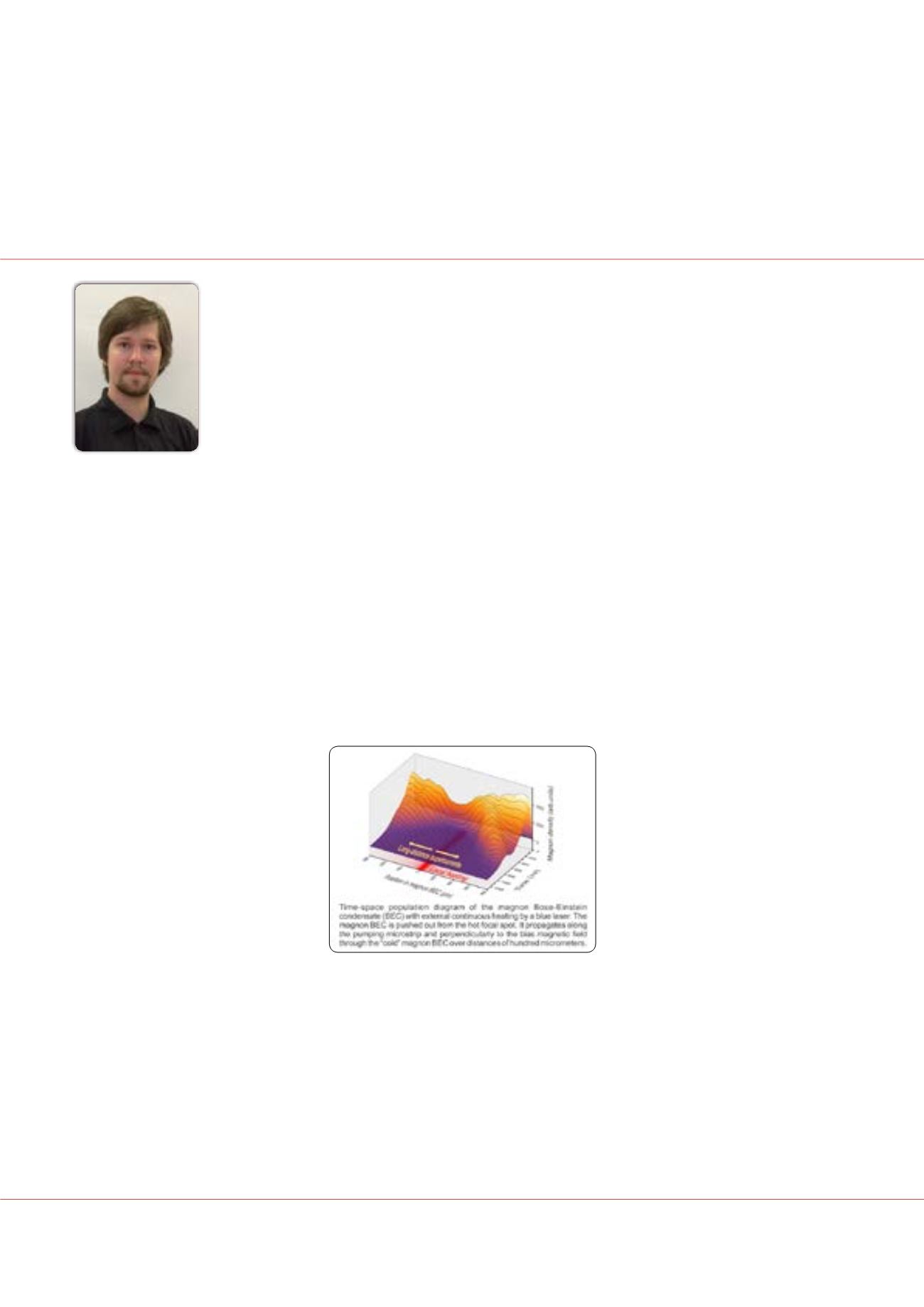

Volume 6
Research & Reviews: Journal of Material Sciences
ISSN: 2321-6212
Magnetic Materials 2018
October 22-23, 2018
Page 61
conference
series
.com
October 22-23, 2018 | Rome, Italy
3
rd
International Conference on
Magnetism and Magnetic Materials
Dmytro A Bozhko, Res. Rev. J Mat. Sci. 2018, Volume 6
DOI: 10.4172/2321-6212-C6-028
Magnonic supercurrents
F
inding new ways for fast and efficient processing and transfer of data is one the most challenging tasks nowadays. Elementary
spin excitations - magnons (spin wave quanta) - open up a very promising direction of high-speed and low-power information
processing. Magnons are bosons, and thus they are able to form spontaneously a spatially extended, coherent ground state, a
Bose-Einstein condensate (BEC), which can be established independently of the magnon excitation mechanism even at room
temperature. Recently we have succeeded to create magnon supercurrents by introducing a time-dependent spatial phase gradient
into its wave function. The experiment was done in a single-crystal film of yttrium iron garnet (Y
3
Fe
5
O
12
, YIG). The temporal
evolution of the magnon BEC formed in a parametrically populated magnon gas was studied by means of time- and wavevector-
resolved Brillouin light scattering spectroscopy. It has been found that local heating in the focal point of a probing laser beam
leads to the excessive decay of the BEC, which is associated with the outflow of condensed magnons driven by a thermal gradient.
Furthermore, I will demonstrate non-local probing of a magnon supercurrent (see Figure), which provides direct evidence of the
condensate propagation driven by a phase gradient. The occurrence of the supercurrent directly confirms the phase coherency of
the magnon condensate and opens door to studies in the general field of magnonic macroscopic quantum transport phenomena
at room temperature as a novel approach in the field of information processing.
Recent Publications
1. Bozhko D.A., Serga A.A., Clausen P., Vasyuchka V.I., Heussner F., Melkov G.A., Pomyalov A., L’vov V.S., and Hillebrands
B. (2016): Supercurrent in a room-temperature Bose-Einstein magnon condensate, Nature Physics 12, 1057.
2. Bozhko D.A., Clausen P., Melkov G.A., L’vov V.S., Pomyalov A., Vasyuchka V.I., Chumak A.V., Hillebrands B., and Serga
A.A. (2017) Bottleneck Accumulation of Hybrid Magnetoelastic Bosons, Physical Review Letters 118, 237201.
3. Kreil A. J. E., Bozhko D. A., Musiienko-Shmarova H. Yu., Vasyuchka V.I., L’vov V.S., Pomyalov A., Hillebrands B., and
Serga A.A. (2018) From Kinetic Instability to Bose-Einstein Condensation and Magnon Supercurrents, Physical Review
Letters 121, 077203.
4. Noack T.B., Musiienko-Shmarova
H.Yu., Langner T., Heussner F., Lauer V., Heinz B., Bozhko D.A., Vasyuchka V.I.,
Pomyalov A., L’vov V.S., Hillebrands B., and Serga A.A. (2018) Spin Seebeck effect and ballistic transport of quasi-acoustic
magnons in room-temperature yttrium iron garnet films, Journal of Physics D: Applied Physics 51, 234003.
Dmytro A Bozhko
Universität Kaiserslautern, Germany
















